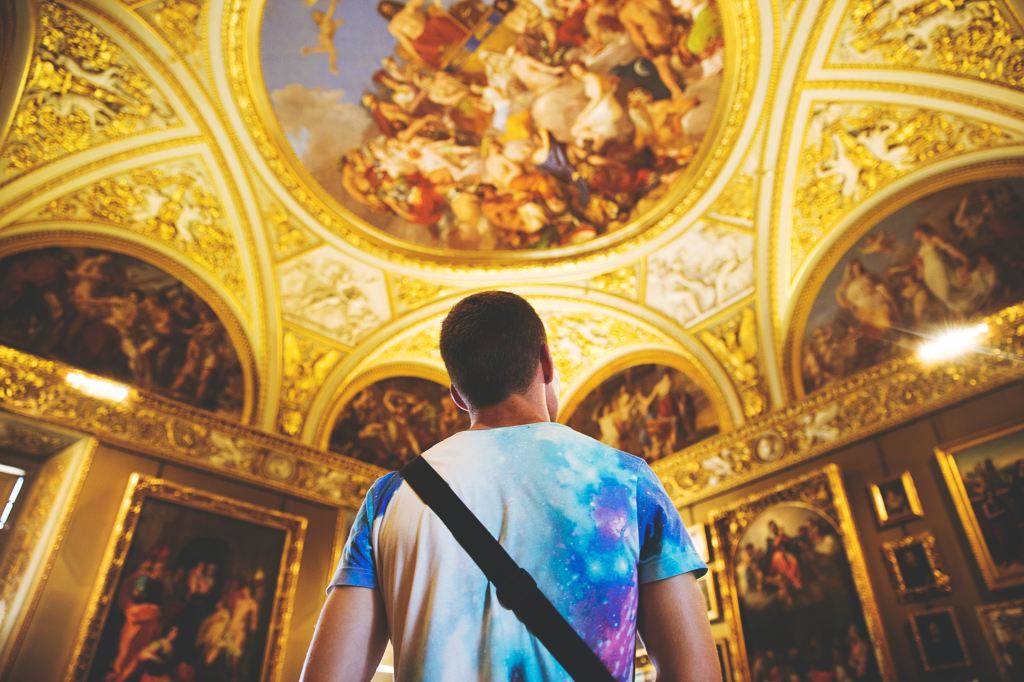Art galleries play an important role in the cultural landscape. But did you know they can be tools to break down discrimination in society – and even help to solve crimes?
The idea of artists teaching highly-trained professionals skills to help them understand and empathise with others seems counterintuitive.
But careful looking, thinking, perceiving and expressing are powerful.
As a legally trained policy adviser and artist, it occurred to me that visual literacy training can help other professionals examine evidence, and each others’ perceptions in new ways.
Looking and perceiving
Lawyers, detectives, criminologists, scientists and policy-makers look for and examine evidence.
Sometimes the obvious is overlooked, or patterns may not be recognised. We each bring our own life experiences, biases and perceptions to the act of looking.
There is a big difference between looking and perceiving.
Looking is the physical act itself – our eyes glance, notice or observe something in front of us. Perceiving includes and activates our senses of sight, touch, smell, taste and hearing. We also bring our past knowledge and experience to the act – this helps to contextualise what we see within our own frame of reference.
All of this requires far greater cognitive processing and takes us beyond just looking at a thing. Being perceptive enables us to assign meaning based on context, content and our past knowledge and experience.
Challenging the status quo
Dada artist Marcel Duchamp’s work Fountain is an iconic example of how traditional ideas of viewing and perceiving an everyday object can be challenged.
Duchamp installed a white porcelain urinal, upside down on a plinth in a gallery, and signed it ‘R. Mutt, 1917’. Duchamp offered this work to the Society of Independent Artists’ salon in New York. He was testing their claim that they would accept any work of art.
It was subsequently rejected on the grounds of its incredibility as an art piece. Duchamp, a member of the Board, resigned in protest.
Fountain asks us to consider what art can be. Duchamp created the conditions for Conceptual art and established the idea of the ‘readymade’ within the art gallery context. He was being contentious on purpose, and putting art back in the service of the mind.
(Even more contentious is the recent claim that Duchamp stole the credit for this groundbreaking artwork from the female artist Baroness Elsa von Freytag-Loringhoven.)
Developing skills
The skills of perception are not a mystery from on high for the lucky few.
They can be taught.
Visual literacy is the ability to read, interpret and create visual information. As artists and designers, this is our bread and butter.
Read: Visual literacy: have you noticed your superpower?
Visual intelligence goes deeper and requires more cognitive functioning. A visually intelligent person can understand complex visual tasks, recognise patterns, predict outcomes and synthesise information.
These are the skills used by curators, graphic designers and graphic recorders who need to be visually intelligent if they are to be effective.
Four ‘A’s of visual intelligence
Amy Herman is a US-based lawyer turned art historian. An expert in visual intelligence, she describes four ‘A’s that support visual intelligence. Herman says it is the ability to:
- Assess
- Analyse
- Articulate, and
- Adapt
to visual information in your environment.
Herman offers a service to develop visual intelligence to professionals who rely on their powers of perception to crack crimes and other hard problems.
Essentially, she runs critique sessions set in art galleries. Non-artists are not used to this process and it helps them to apply their visual intelligence skills within the context of a painting. These skills are transferable and they can take them back to their professional work environments.
Working in small groups, each person shares what they see. By default, and unconsciously, this includes their own preferences and biases. People learn to articulate what is in front of them and what it could mean. By collaborating in a group and sharing, a variety of perspectives are surfaced and communication and understanding are improved.
Participants visit art galleries with an arts professional who introduces them to a painting. They are instructed to really look at it for some time as individuals. Each person describes what they have seen and what it could mean. They take turns and then discuss the work as a group. Different aspects and interpretations are voiced.
Herman then describes the work according to the current art historical and theoretical context (also an evolving feast). These workshops build visual literacy skills that can ultimately help to solve crimes, notice fine details and look at the world in a more nuanced and detailed way.
In a world increasingly bombarded with visual information, visual intelligence is a source of cultural capital.
Developing visual literacy increases empathy and understanding of the ‘other’. Empathy is crucial for breaking down stereotypes, fear and discrimination.
More good reasons to value artists.
 https://www.artshub.com.au/wp-content/uploads/sites/2/2023/06/joshua-earle-EjXX-vhMdLI-unsplash.jpg?resize=300,200 300w,
https://www.artshub.com.au/wp-content/uploads/sites/2/2023/06/joshua-earle-EjXX-vhMdLI-unsplash.jpg?resize=300,200 300w,
You need to be a member of THE VISUAL TEACHING NETWORK to add comments!
Join THE VISUAL TEACHING NETWORK